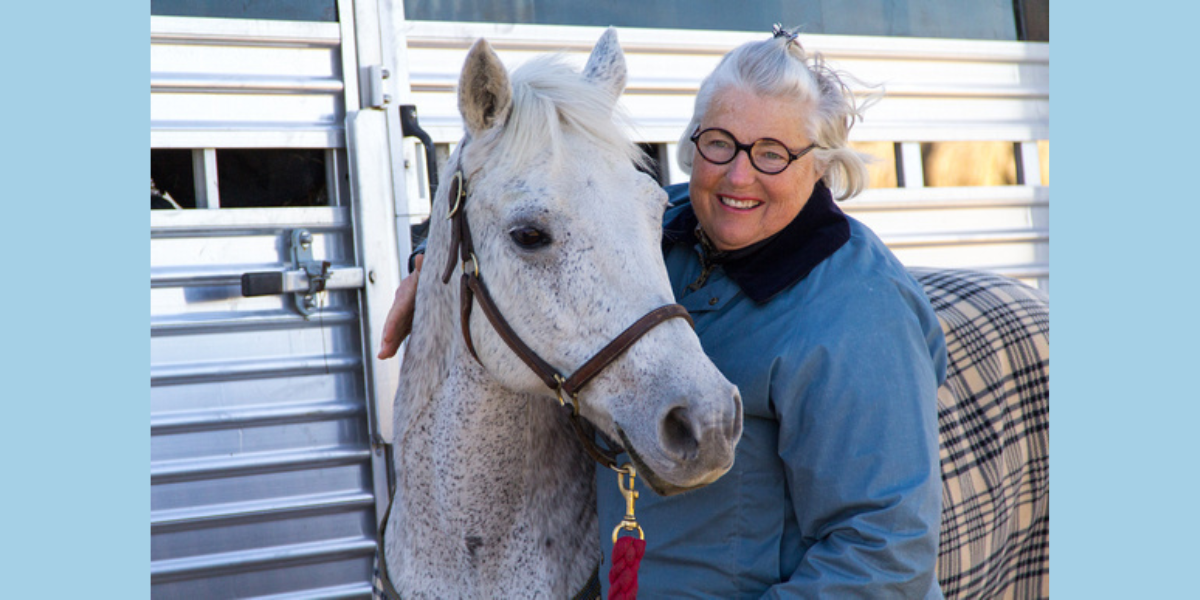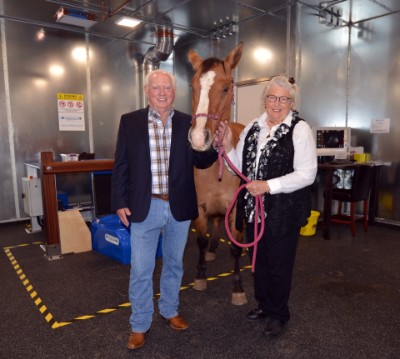Evolving equine medicine
Cindy Piper builds a legacy of pushing what’s possible

Cindy Piper builds a legacy of pushing what’s possible
Cindy Piper poses with a horse. Photo courtesy of Kathleen Riley-Daniels Photography.
Caring for horses has been a defining part of Cindy Piper’s life since she was 7 years old.
Her first love was a black and white pinto pony named Topper, who lived on her family’s dairy farm in White Bear Lake, Minn. Later down the line, there was Hard Knocks, a registered Morgan who Piper had trained for English riding and fox hunting.
Hard Knocks changed the course of Piper’s life the day he endured a deep laceration on his leg, in 1967. The cut required the expertise of University of Minnesota (UMN) equine specialists. TK got the help he needed, but the old facility wasn’t what it could be.
“We used to have to walk our horse around the parking lot to diagnose lameness,” Piper remembers. “But I’m loyal to the university because I feel very strongly that we have some of the best veterinarians in the area.”
She was also steadfast in always providing the opportunity to move veterinary education forward. So in the 1990s, when there was talk of building a new facility for equine medicine, Piper did more than donate. She organized.
She made calls, called meetings, and collected donations, including one from her and her husband’s bank account. In the end, she was able to gather $7 million in donations to help build the state-of-the-art Leatherdale Equine Center. The donations helped pay for a building and equipment that attracted veterinarians from around the world.

“I’m impressed with what we were able to do and the incredible talent we were able to recruit because of that building,” says Piper, who has been there every step of the way, including when the equine center was ready to invest in a cutting edge MRI machine that would entirely change the way the center was able to practice equine medicine and research.
Being able to peer into horses’ limbs without putting them under anesthesia made the scans safer for the animals and more affordable for caretakers.
To help the Leatherdale Equine Center evolve and continue to be a leader in veterinary medicine, Piper and fellow donor, Bill Dudley, split the cost of bringing the MRI to campus.
The standing MRI machine is the only one in Minnesota. Since 2020, the standing CT and MRI machines at the Leatherdale Equine Center have helped diagnose nearly 500 patients and have expanded the College of Veterinary Medicine’s (CVM) research and education.
The strides she’s made pushing forward veterinary medicine in Minnesota will be her well-earned legacy.
“I feel so strongly about educating the animal carers of the future and at the University of Minnesota, we have one of the premier facilities for horses in the country,” says Piper, who recently gifted an estate donation that will go toward equipment and maintaining the Piper Equine Hospital.
“I was excited to be able to know that at the end of my life I will be able to give something to the university that will keep this education process going.”
Join Cindy Piper’s legacy of giving by making a contribution to the Leatherdale Equine Center Building Fund.